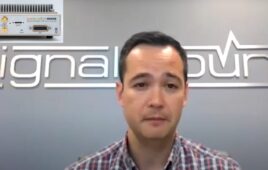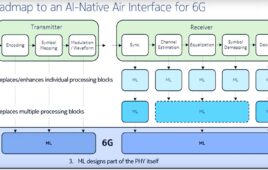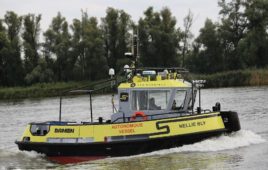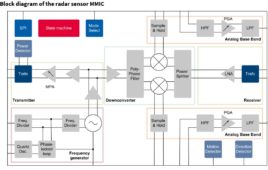The U.S. Army is refurbishing Russell Tower to support renewed development and testing efforts.
The U.S. Army Aviation and Missile Research, Development and Engineering Center’s Weapons Development and Integration Directorate owns and operates the instrumentation tower.
The Measurement Facility was completed in 1988 and named after Robert F. Russell, a radar technology branch chief who was instrumental in getting the project started and passed away the same year. It was congressionally funded and cost approximately $5 million.
“Russell Tower is one of two 300-foot towers in the country,” said Robert Milton, Fabrication and Evaluation function chief. At 329 feet tall, it has full views of the south, west and north. “The only other instrumentation towers of this size and caliber are at Eglin Air Force Base, Florida.”
Windows in the air-conditioned 500-square-foot laboratory on the top landing are removable for unobstructed view. This line of sight allows observations of test systems against physical targets as well as live rocket motor plumes from statically fired propulsion systems. The Solid Rocket Motor Static Test Area, Building 9010, was strategically located in order for optimum viewing angles from the tower.
The facility is equipped to support development and testing of optical sensors, radar sensors, fire control systems, target acquisition systems, target signature measurements, evaluation of atmospheric effects, determining impact of clutter (natural or man-made), and smoke obscurants can be generated.
The facility’s turntables are not currently functional but funding is being pursued. Tactical ground targets such as tanks or helicopters can be mounted and moved to simulate virtually any missile approach angle, from a horizontal direct fire to a vertical top attack. Different full-size vehicles are available for use as laser and radar targets.
“Our first priority is to get the elevators up and running again unless we want to take all 485 steps to the top,” said Milton. The tower’s two elevators fell into disrepair and are not currently usable. Once complete, the main elevator will transport personal and equipment to the top or any of the floor landings.
“This allows a customer to stop at different levels and get different look down angles on the target.”
Another elevator serves as a movable laboratory area where tests can be conducted at any elevation from zero to 300 feet. Funding for the elevator repair has been secured, and work is scheduled to begin next week.
Russell Tower can be used by any government agency or private contractor sponsored by a government agency. Points of contact are Jay Lilley (256) 876-3225 and Robert Milton (256) 842-0104.




